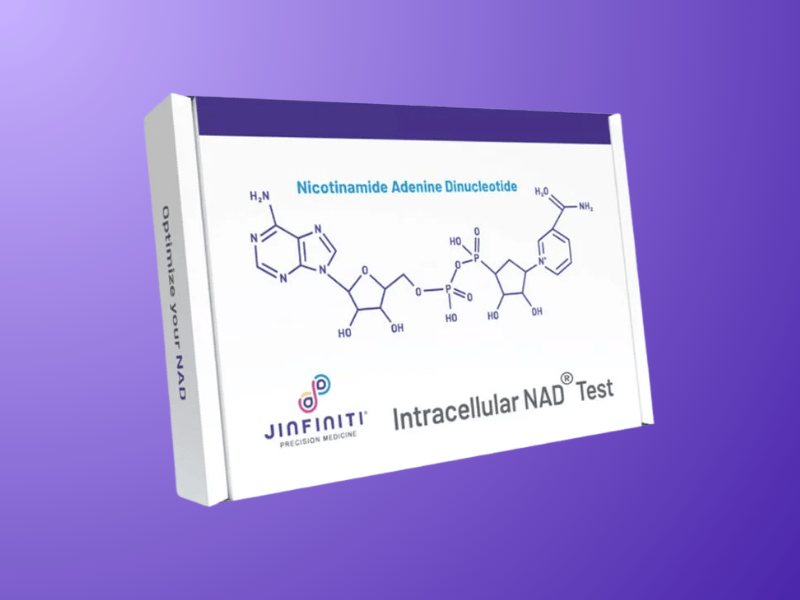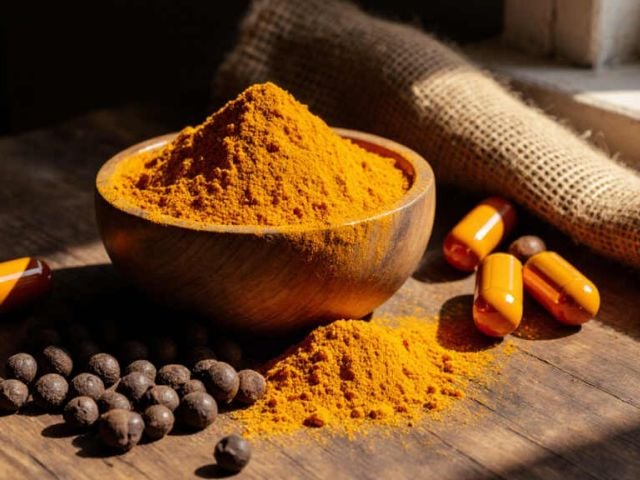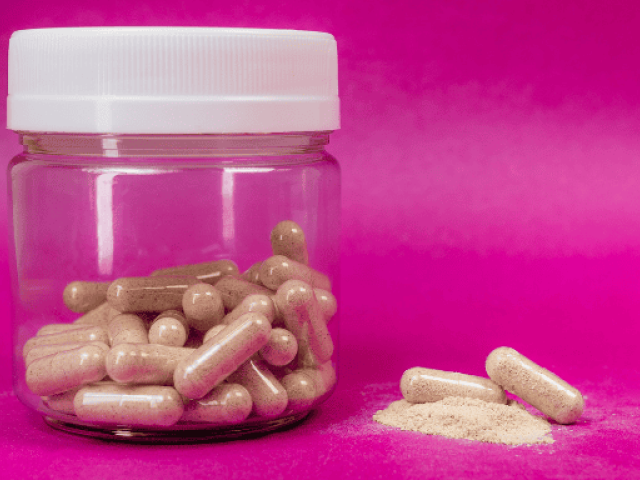
Boosting Metabolism After 50: What Experts Say Works
The widespread belief that metabolism crashes after 50 turns out to be more myth than reality. While some changes do occur, current research shows that maintaining a healthy metabolism well into your later years is entirely achievable with the right approach.
Understanding what really happens to your metabolic rate as you age can change everything about how you approach health and weight management.
Key Takeaways
- Metabolism remains stable between ages 20 and 60, only declining modestly after that point
- Muscle loss drives most metabolic changes, not age itself
- Strength training and adequate protein are your most powerful tools to boost metabolism
- Supplementation may support cellular energy production
What Happens to Your Metabolism After 50?
What science tells us about metabolism and aging challenges decades of conventional wisdom.
A 2021 study published in Science1 analyzed data from over 6,600 people and changed our understanding of how metabolism changes across the lifespan. The researchers found that metabolism remains remarkably stable between ages 20 and 60.
“What we found is that from ages 20 to 60, metabolism plateaus,” explains Herman Pontzer, associate professor of evolutionary anthropology at Duke University and study co-author.
The research showed metabolism only begins to decline after age 60. Even then, it decreases by a modest 0.7% per year.
This challenges the assumption that middle-age weight gain can be blamed solely on a slowing metabolism.
The Real Reason for Slow Metabolism
The primary driver of metabolic changes isn’t age itself, but muscle loss (a condition called sarcopenia). Research shows that adults lose 3-8% of muscle mass per decade after age 30, with the rate speeding up after 502.
Dr. Thomas Perls of Boston University highlights the significance: “People older than 50 tend to have fewer type two muscle fibers, also called fast-twitch fibers. These fibers are needed for burning energy efficiently.”
Over time, muscles accumulate connective tissue and fat, slowing metabolism and reducing fat-burning capacity.
A study of 959 people found that individuals aged 70 had 20 pounds less muscle mass and an 11% slower resting metabolic rate compared to those aged 403. The metabolic impact is substantial.
Hormonal shifts also play a role. For women, declining estrogen levels during menopause lead to increased belly fat and reduced muscle mass maintenance. For men, gradual testosterone decline affects muscle mass and fat distribution.
Lifestyle factors compound these changes. Chronic stress elevates cortisol, which promotes fat storage. Poor sleep disrupts appetite regulation. Reduced physical activity in daily activities decreases overall energy expenditure.
6 Science-Backed Ways to Boost Your Metabolism

These strategies address the root causes of metabolic decline and help your body burn more calories throughout the day.
1. Make Strength Training Your Priority
Research consistently shows that strength training is the most effective way to combat metabolic decline4. Building muscle through resistance exercises can help reignite metabolism, burn fat, and protect bones and joints.
Muscle tissue burns more calories even at rest compared to fat tissue. This means a higher metabolic rate around the clock.
Here’s what to do:
- Aim for 2-3 strength training sessions per week
- Focus on compound movements like squats, deadlifts, rows, and presses
- Use progressive overload by gradually increasing resistance over time
- Include both lifting weights and bodyweight exercises
- Try resistance bands for convenient home workouts
2. Get Your Protein Right
Protein requirements increase with age due to anabolic resistance (the reduced ability to build muscle protein). Experts recommend 1.2-2.0 g/kg/day for older adults5, much higher than the standard RDA of 0.8 g/kg/day.
Protein also has a high thermic effect. Your body uses more energy to digest protein compared to fat or carbohydrate.
Key strategies include:
- Distribute protein evenly throughout the day
- Aim for 25-35g of high-quality protein per meal
- Include leucine-rich sources like eggs, dairy, meat, and legumes
- Consider protein supplementation if you struggle to eat enough through food alone
3. Move More Throughout Your Day
Aerobic exercise offers multiple metabolic benefits including improved heart health, better blood sugar control, and increased energy expenditure. The key is finding activities you enjoy and can maintain long term.
Your body composition improves when you combine cardio with strength training. You lose weight more effectively and maintain muscle mass better.
Effective approaches:
- Get 150 minutes of moderate aerobic activity weekly
- Include variety: walking, swimming, cycling, dancing
- Add high-intensity interval training 1-2 times per week
- Focus on consistency over intensity
- Count your daily activities toward your movement goals
4. Sleep Better to Burn More Calories
Research shows that poor sleep quality is directly linked to disrupted appetite regulation and metabolic dysfunction6. Quality sleep supports hormone balance and helps maintain a healthy metabolism.
Sleep deprivation reduces the number of calories your body burns at rest. It also increases hunger hormones and decreases satiety signals.
Sleep optimization strategies:
- Aim for 7-9 hours of quality sleep nightly
- Maintain consistent sleep and wake times
- Create a cool, dark sleeping environment
- Limit caffeine and screens before bedtime
- Consider supplements that support better sleep if needed
5. Manage Stress Levels
Chronic stress can speed up biological aging and disrupt metabolic function7. Research shows that when cortisol levels double, biological age can increase by about 50%.
High cortisol promotes fat storage, especially around your midsection. It also breaks down muscle tissue and increases appetite.
Stress management techniques:
- Practice mindfulness or meditation
- Engage in regular physical activity
- Maintain social connections
- Set boundaries around work and obligations
- Seek professional counseling if stress feels overwhelming
6. Stay Hydrated
Proper hydration supports thermogenesis, the process by which your body heats water to body temperature. This burns calories throughout the day.
Drinking water before meals can also help you eat fewer calories by increasing feelings of fullness. Your body needs adequate water for all metabolic processes to function properly.
Supplements That Support Metabolic Health
Targeted supplementation can address nutritional gaps and support the cellular processes that power your metabolism.
NAD+ for Cellular Energy
NAD+ (nicotinamide adenine dinucleotide) is a coenzyme present in every cell that plays a critical role in energy metabolism. NAD+ levels decline with age, which directly impacts how efficiently your body burns fuel for energy.
NAD+ is needed for over 500 different cellular activities. It powers mitochondria (your cells’ energy factories) and helps convert food into usable energy.
Research shows that boosting NAD+ levels can improve metabolic function8. You can increase NAD+ through supplementation with precursors like NMN (nicotinamide mononucleotide) or NR (nicotinamide riboside).
Testing your NAD+ levels allows you to establish a baseline and track improvements. This personalized approach helps you determine the right dosage for your body needs.

B Vitamins for Energy Metabolism
B vitamins play critical roles as cofactors in energy metabolism. A study published in the Journal of Nutritional Science found that B vitamin supplementation could effectively reduce body weight gain by improving energy metabolism-related enzyme activities9.
Key findings show:
- Thiamine (B1), riboflavin (B2), and niacin increased metabolic enzyme activities
- Pyridoxine (B6), cobalamin (B12), and folate improved metabolic enzyme function
- Combined B vitamin supplementation reduced weight gain by improving fat and carbohydrate metabolism
A B-complex supplement containing all B vitamins works best. Deficiency in one can affect the others’ effectiveness.
Vitamin D
Vitamin D plays a significant role in regulating hormone function that impacts metabolism. Vitamin D deficiency can lead to fatigue and difficulty managing body weight, which is common in adults over 50.
Supplementation benefits include:
- Supports energy levels and metabolic function
- Helps regulate insulin sensitivity
- Assists in maintaining healthy hormone balance
- Supports muscle strength and function
Many people don’t get enough vitamin D from sun exposure alone, especially in winter months.
Magnesium
Magnesium is required for over 300 biochemical processes, including energy production. A study on chromium and magnesium co-supplementation found significant metabolic benefits10.
The research showed:
- Improved glucose tolerance and insulin sensitivity
- Reduced inflammatory markers
- Better lipid profiles
- Improved waist-to-hip ratios
Magnesium helps your body convert food into energy and supports healthy blood sugar metabolism.
Green Tea Extract
Green tea contains catechins and caffeine that may help boost metabolism and fat oxidation. A study of post-menopausal women found that 60-day green tea extract supplementation resulted in multiple benefits11.
Results included:
- Increased fat oxidation (11.04% improvement)
- Improved insulin sensitivity
- Reduced waist circumference
- Higher resting energy expenditure (83.21 calorie increase)
The combination of catechins and caffeine appears to work together to increase metabolism and help your body burns fat more efficiently.
Omega-3 Fatty Acids
Recent research shows omega-3 fatty acids can slow organ aging through promoting energy metabolism12. These healthy fats support metabolic health in multiple ways.
Study findings demonstrate:
- Boosted fatty acid oxidation
- Increased ATP production in aged organs
- Improved insulin sensitivity
- Better fat metabolism and reduced inflammation
Omega-3s from fish oil or algae-based sources provide EPA and DHA, the most bioavailable forms.
Why Muscle Mass Matters Most
Your muscle tissue is your body’s metabolic engine, burning calories around the clock.
Muscle is metabolically active tissue. It requires energy to maintain, which means it burns calories even at rest. Fat tissue, by contrast, is relatively inactive metabolically.
When you lose muscle mass, your resting metabolic rate drops. This means you burn fewer calories throughout the day, even when you’re not exercising.
The good news: muscle loss is not inevitable. Strength training and adequate protein can help you build muscle at any age.
Research on sarcopenia shows that muscle-building interventions can reverse age-related muscle loss13. You can increase your metabolic rate by adding muscle tissue to your frame.
The Hormonal Connection
Hormones regulate how your body uses energy, stores fat, and builds muscle. Changes in hormone levels after 50 significantly impact metabolism14.
For women, menopause brings declining estrogen. This hormone shift doesn’t directly slow metabolism but changes where your body stores fat. More fat accumulates around the midsection rather than the hips and thighs.
Men experience gradual testosterone decline starting around age 30. Lower testosterone makes it harder to build muscle and easier to gain body fat.
Both sexes may experience changes in thyroid function, which directly controls metabolic rate. Growth hormone levels also decline with age, affecting body composition.
Thyroid Function and Metabolism
Your thyroid gland acts as your body’s metabolic thermostat, controlling how fast or slow your metabolism runs.
Thyroid function naturally changes with age. Research shows that after age 50, thyroid hormone production may decrease in some people15.
Your thyroid produces hormones that tell cells how much energy to use. When thyroid hormone levels drop (hypothyroidism), your metabolism slows down. You may gain weight, feel tired, and struggle to stay warm.
TSH (thyroid-stimulating hormone) levels may naturally increase slightly with age. This doesn’t always mean your thyroid is failing. Some age-related changes in thyroid function fall within normal ranges.
Low T3 syndrome becomes more common after 50. This condition involves lower levels of active thyroid hormone, which can slow metabolism even when TSH appears normal.
When to Test Your Thyroid Function
Thyroid dysfunction affects about 13-15% of adults over 50. Regular testing helps catch problems early16.
Consider thyroid testing if you experience:
- Unexplained weight gain despite diet and exercise
- Persistent fatigue and low energy
- Sensitivity to cold temperatures
- Difficulty concentrating or brain fog
- Dry skin and brittle nails
- Changes in heart rate
A complete thyroid panel should include TSH, free T3, free T4, and thyroid antibodies. Many doctors only test TSH, which can miss some thyroid problems.
If your thyroid is underactive, treatment with thyroid hormone replacement can restore your metabolic rate to normal levels.
Bottom Line
The science is clear: your metabolism doesn’t crash after 50 the way most people think. The real culprits behind metabolic decline are muscle loss, hormonal changes, and lifestyle factors that often shift with age.
You have more control than you realize. Strength training builds muscle that burns calories around the clock. Adequate protein supports muscle growth. Quality sleep and stress management keep your hormones balanced.
Supplementation with NAD+ boosters, B vitamins, or other compounds may support cellular energy production. These science-backed strategies work together to help you maintain a healthy metabolism and vibrant energy throughout your later years.
Referenced Sources
- Pontzer H, Yamada Y, Sagayama H, Ainslie PN, Andersen LF, Anderson LJ, Arab L, Baddou I, Bedu-Addo K, Blaak EE, et al. Daily energy expenditure through the human life course. American Association for the Advancement of Science (AAAS); 2021. p. 808–812. https://doi.org/10.1126/science.abe5017. doi:10.1126/science.abe5017
- Pereira A, Silva AJ, Costa AM, Monteiro A, Bastos E, Marques MC. Muscle tissue changes with aging. Acta Médica Portuguesa. 2013;26 1:51–5.
- Tzankoff SP, Norris AH. Effect of muscle mass decrease on age-related BMR changes. American Physiological Society; 1977. p. 1001–1006. https://doi.org/10.1152/jappl.1977.43.6.1001. doi:10.1152/jappl.1977.43.6.1001
- Sundell J. Resistance Training Is an Effective Tool against Metabolic and Frailty Syndromes. Hindawi Limited; 2011. p. 1–7. https://doi.org/10.4061/2011/984683. doi:10.4061/2011/984683
- Baum J, Kim I-Y, Wolfe R. Protein Consumption and the Elderly: What Is the Optimal Level of Intake? MDPI AG; 2016. p. 359. https://doi.org/10.3390/nu8060359. doi:10.3390/nu8060359
- Valenti G, Bonomi AG, Westerterp KR. Quality Sleep Is Associated With Overnight Metabolic Rate in Healthy Older Adults. Oxford University Press (OUP); 2016. p. glw107. https://doi.org/10.1093/gerona/glw107. doi:10.1093/gerona/glw107
- Polsky LR, Rentscher KE, Carroll JE. Stress-induced biological aging: A review and guide for research priorities. Elsevier BV; 2022. p. 97–109. https://doi.org/10.1016/j.bbi.2022.05.016. doi:10.1016/j.bbi.2022.05.016
- Connell NJ, Houtkooper RH, Schrauwen P. NAD+ metabolism as a target for metabolic health: have we found the silver bullet? Springer Science and Business Media LLC; 2019. p. 888–899. https://doi.org/10.1007/s00125-019-4831-3. doi:10.1007/s00125-019-4831-3
- Zheng Y, Ma A, Zheng M, Wang Q, Liang H, Han X, Schouten EG. B Vitamins Can Reduce Body Weight Gain by Increasing Metabolism-related Enzyme Activities in Rats Fed on a High-Fat Diet. Springer Science and Business Media LLC; 2018. p. 174–183. https://doi.org/10.1007/s11596-018-1862-9. doi:10.1007/s11596-018-1862-9
- Zhao Y, Zhou M, Shang Y, Dou M, Gao S, Yang H, Zhang F. Effects of co-supplementation of chromium and magnesium on metabolic profiles, inflammation, and oxidative stress in impaired glucose tolerance. SAGE Publications; 2024. https://doi.org/10.1177/14791641241228156. doi:10.1177/14791641241228156
- Rondanelli M, Gasparri C, Perna S, Petrangolini G, Allegrini P, Fazia T, Bernardinelli L, Cavioni A, Mansueto F, Oberto L, et al. A 60-Day Green Tea Extract Supplementation Counteracts the Dysfunction of Adipose Tissue in Overweight Post-Menopausal and Class I Obese Women. MDPI AG; 2022. p. 5209. https://doi.org/10.3390/nu14245209. doi:10.3390/nu14245209
- Xiong Y, Li X, Liu J, Luo P, Zhang H, Zhou H, Ling X, Zhang M, Liang Y, Chen Q, et al. Omega-3 PUFAs slow organ aging through promoting energy metabolism. Elsevier BV; 2024. p. 107384. https://doi.org/10.1016/j.phrs.2024.107384. doi:10.1016/j.phrs.2024.107384
- Walston JD. Sarcopenia in older adults. Ovid Technologies (Wolters Kluwer Health); 2012. p. 623–627. https://doi.org/10.1097/bor.0b013e328358d59b. doi:10.1097/bor.0b013e328358d59b
- Pataky MW, Young WF, Nair KS. Hormonal and Metabolic Changes of Aging and the Influence of Lifestyle Modifications. Elsevier BV; 2021. p. 788–814. https://doi.org/10.1016/j.mayocp.2020.07.033. doi:10.1016/j.mayocp.2020.07.033
- Franceschi C, Ostan R, Mariotti S, Monti D, Vitale G. The Aging Thyroid: A Reappraisal Within the Geroscience Integrated Perspective. The Endocrine Society; 2019. https://doi.org/10.1210/er.2018-00170. doi:10.1210/er.2018-00170
- Gietka-Czernel M. The thyroid gland in postmenopausal women: physiology and diseases. Termedia Sp. z.o.o.; 2017. p. 33–37. https://doi.org/10.5114/pm.2017.68588. doi:10.5114/pm.2017.68588

Get weekly health insights and exclusive offers by joining our newsletter.










